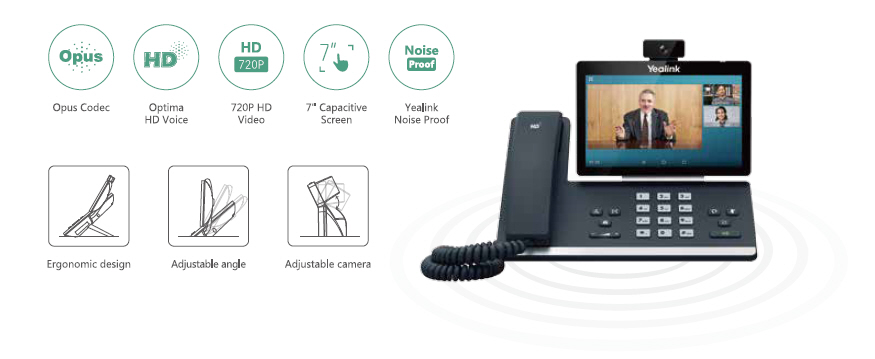Introduction
In today's fast-paced digital world, the significance of having a robust communication system cannot be overstated. As businesses are increasingly relying on Voice over Internet Protocol (VoIP) technology for their communication needs, understanding the role of internet speed in VoIP performance and telephone choices has become essential. This article will explore the intricate relationship between internet speed and VoIP functionality, while also examining various business phone systems that can enhance communication efficiency.
The Role of Internet Speed in VoIP Performance and Telephone Choices
When it comes to VoIP technology, internet speed is the lifeblood that sustains call quality and reliability. Without adequate speed, even the most advanced VoIP systems may falter, leading to issues such as dropped calls, latency, and choppy audio quality. So what makes internet speed so critical?
Bandwidth Requirements: Each VoIP call requires a specific amount of bandwidth. Generally, a single call uses about 100 kbps of upload and download speed. If your connection can't handle multiple calls simultaneously due to insufficient bandwidth, you're bound to experience poor performance.

Latency: This refers to the delay between sending and receiving data packets over the network. A good rule of thumb is that latency should remain under 150 milliseconds for optimal voice quality; anything above that can result in frustrating communication experiences.
Jitter: Jitter is the variation in packet arrival times, which can lead to interruptions during calls. A stable internet connection minimizes jitter levels, ensuring smooth conversations.
Packet Loss: If data packets get lost during transmission due to slow speeds or unstable connections, it can lead to missing words or phrases during conversations, resulting in miscommunication.
Quality of Service (QoS): Implementing QoS settings on your router prioritizes VoIP traffic over other types of data traffic. This ensures that voice calls receive the necessary bandwidth even when other devices are consuming network resources.
Understanding these key elements will help you make informed decisions regarding your business phone systems by ensuring they meet your organization's needs based on available internet speeds.
Understanding Bandwidth and Its Impact on VoIP
What Is Bandwidth?
Bandwidth refers to the maximum rate at which data can be transferred over an internet connection in a given time frame—typically measured in Mbps (megabits per second). In simple terms, it's like a highway: the wider the road (or greater the bandwidth), the more vehicles (data) can travel simultaneously without causing traffic jams (slowdowns).
How Much Bandwidth Do You Need for VoIP?
Here's where things get interesting! The amount of bandwidth required for VoIP depends on several factors:
- The number of concurrent calls. The codec being used (different codecs compress audio differently). Whether video is being transmitted alongside voice.
For instance:
| Codec Type | Bitrate (kbps) | Concurrent Calls with 1 Mbps | |---------------------|----------------|-------------------------------| | G.711 | 64 | 15 | | G.729 | 8 | 125 | | Opus | Varies | Varies |
If you're running a business with multiple employees using phone systems simultaneously, you'll want to calculate your total required bandwidth accordingly.

Why Bandwidth Matters
Having sufficient bandwidth is crucial for achieving high-quality voice communications. If you're trying to run multiple applications—like video conferencing or large file downloads—on a limited bandwidth connection while also making VoIP calls, you're setting yourself up for poor call quality at best!
Latency: The Hidden Enemy
What Is Latency?
Latency is often overlooked but plays a crucial role in determining how well your calls sound and feel. Latency refers to the time it takes for data packets to travel from one point to another across the network.
How Does Latency Affect Your Calls?
Even though some latency is normal—it takes time for data packets to traverse networks—excessive latency leads to delays between speakers during conversations. Imagine having an important meeting where you ask a question only to have silence on the other end because there's too much delay!
Acceptable Levels
As mentioned earlier, keeping latency below 150 milliseconds is ideal for smooth VoIP communications:
- Under 20 ms: Excellent 20 - 50 ms: Good 50 - 100 ms: Acceptable Over 100 ms: Poor; consider upgrading your connection
Measuring Latency
You can easily measure latency using tools like ping tests or traceroute commands on your computer terminal—this helps you diagnose potential issues before they escalate!
Jitter: Keeping Conversations Smooth
What Is Jitter?
Jitter refers specifically to variations in packet arrival times; if packets VoIP Phone System Oregon arrive out-of-order or sporadically, it can create noticeable gaps or overlaps during conversations—definitely not something you want!
Causes of Jitter
Several factors contribute to jitter:
- Network congestion. Improperly configured routers. Wireless connections experiencing interference.
Managing Jitter
To mitigate jitter effectively:

Packet Loss: What's Going Wrong?
Understanding Packet Loss
Packet loss occurs when one or more data packets traveling across a network fail to reach their destination—this could be due to various reasons such as network congestion or hardware failure.
How Does It Affect VoIP Quality?
Even minimal packet loss can lead to significant disruptions during conversations:
- Missing syllables or entire words. Echoes or garbled sounds.
Acceptable Levels of Packet Loss
Ideally, packet loss should remain below 1% for satisfactory voice quality; anything higher necessitates immediate troubleshooting and improvements!
Quality of Service (QoS): Ensuring Priority
What Is QoS?
Quality of Service (QoS) allows you to prioritize different types of internet traffic based on their importance—this means that vital services like VoIP get preferential treatment over less critical activities like downloading files.
Configuring QoS Settings
Most modern routers come equipped with QoS features; here's how you can set them up:
Access your router's admin panel. Locate QoS settings under 'Traffic Management.' Assign higher priority levels for specific devices running VoIP applications.By implementing QoS correctly, you'll significantly reduce lag times and improve overall call clarity!
Choosing the Right Business Phone Systems
Traditional vs Cloud-Based Systems
As businesses evolve technologically speaking—the choice between traditional landlines versus cloud-based solutions becomes pivotal! Here's what you should consider:
Traditional Landlines
Pros:
- Reliable and straightforward setup.
Cons:
- Limited mobility; often tied down by physical infrastructure.
Cloud-Based Systems
Pros:
- Highly flexible; allows remote work capabilities.
Cons:
- Dependent on internet connectivity; requires sufficient speeds!
Ultimately choosing between these options depends heavily upon how reliable your internet service provider's offerings are!
Factors Influencing Your Telephone Choices
Assessing Your Communication Needs
What do you need from your business phone system? Consider aspects such as:
Number of employees requiring phones. Types of features needed (voicemail-to-email integration?). Desired reliability standards based upon existing infrastructure challenges!Taking inventory here will simplify decision-making immensely later down-the-line!
Evaluating Provider Options
Not all providers offer equal service levels when it comes down-to-internet speeds so choose wisely! Look into reviews comparing performance metrics related directly back towards their support teams' effectiveness too—you never know when something might go wrong!
The Future Trends in Business Phone Systems
With technological advancements continuing unabated—the landscape surrounding business phone systems evolves rapidly too! Here are some trends worth noting:
Increased adoption rates regarding AI-powered virtual assistants within telephony setups! Enhanced focus placed upon security protocols safeguarding sensitive customer information! Greater emphasis centered around integrating omnichannel strategies unifying disparate forms-of-contact under cohesive platforms!Each trend highlights shifting consumer expectations alongside emerging industry standards setting benchmarks everyone must strive towards achieving collectively as we move forward together!
Common Misconceptions About Internet Speed & VoIP
There are plenty misconceptions floating around regarding how these two elements interact—let’s clear some air here once-and-for-all!
1) “I don’t need high-speed internet.”
- Wrong! Adequate speeds are crucial unless you'd like distorted audio every time someone speaks!
2) “All VOIPs perform equally.”
- Nope! Different codecs yield varying results based upon available resources!
3) “My home network suffices.”
- Maybe—but if many devices compete simultaneously then expect bottlenecking effects occurring frequently throughout usage periods too!
Knowing what's fact versus fiction empowers individuals helping them navigate through murky waters effectively without getting snagged along-the-way inadvertently either way ultimately!
FAQs about Internet Speed & VoIP Performance
Q1: How much internet speed do I need for good quality VoIP calls?
A1: For optimal call quality without interruptions, aim for at least 100 kbps upload/download speeds per call along with extra bandwidth allowing simultaneous users comfortably chatting alike too!
Q2: Can poor Wi-Fi affect my VoIP performance?
A2: Absolutely! Unstable Wi-Fi connections introduce variables leading towards dropped calls & distortion issues impeding overall experience negatively here regrettably…
Q3: Is there an ideal router type suited specifically toward supporting VOIPs?
A3: Yes indeed! Lookout routers equipped with QoS features prioritizing voice traffic appropriately ensuring seamless experiences always maintained consistently throughout usages periods alike here directly impacting positively…
Q4: Can I use my existing landline number if I switch over entirely onto VOIPs?
A4: Most likely yes depending upon whichever service provider chosen since many offer number portability options allowing transitions smoothly executed successfully facilitating ease-of-use overall…
Q5: Will upgrading my Wi-Fi help improve my current situation regarding any encountered problems seen thus far?
A5 : Definitely worth checking out especially if experiencing significant lags/dropouts regularly found previously observed continuously affecting interactions severely negatively hindering productivity output altogether…
Conclusion
In wrapping things up—it’s crystal clear that understanding the role of internet speed in VoIP performance and telephone choices cannot be understated anymore than previously discussed throughout this extensive piece either way completely highlighting each aspect thoroughly examined critically before reaching final conclusions drawn logically speaking overall comprehensively evaluated accurately summarily designed informatively beneficially too ultimately…
So whether you're venturing into new territory selecting appropriate business phone systems or simply fine-tuning existing infrastructures already set-up take heed while navigating these waters ahead carefully ensuring solid foundations built right from start ensuring future successes achieved consistently yielding positive outcomes ultimately desired entirely… Happy calling everyone!